In one of the most remote parts of Chiayi County, a hamlet shares the exact same name as a well-known center of tea production in New Taipei City.
Pinglin (坪林) in Dapu Township (大埔) is around 550m above sea level. The road to it is good enough for any car or motorcycle, and so few people live there that it’s an ideal place for the virus-afraid to go sightseeing.
I rode in from Yujing District (玉井) in Tainan, taking Provincial Highway 3 through Nansi (楠西) and above Zengwen Reservoir (曾文水庫). At the entrance to Chiayi Farm (嘉義農場), I halted briefly, curious if this government-owned attraction — 40 hectares of orchards and formal gardens — would soon reopen. There was no one around I could ask, but nothing I saw hinted that it’ll come back to life in the near future.
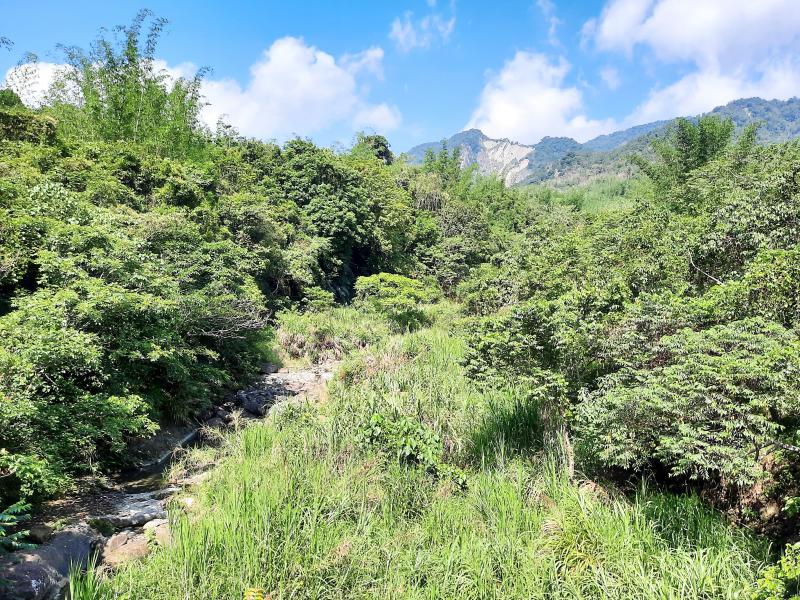
Photo: Steven Crook
A little further on, the turnoff to Pinglin, opposite the km341 marker on Highway 3, is clearly marked in English as well as Chinese.
Less than 2km up the road to Pinglin, Chiayi Local Road 147 (嘉147), I stopped to inspect a sign I don’t think I’d seen before. It wasn’t, as I first assumed, a reminder that the Buddhist practice of fangsheng (放生, the “merciful release” of captive creatures into the wild to accrue merit) can wreak ecological havoc.
Instead, it was a warning from the Forestry Bureau’s Chiayi District Office that anyone caught catching or trading protected turtle species could be sentenced to a jail term of up to five years, and fined between NT$300,000 and NT$1.5 million. Among the species it specifically mentioned were the Yellow-margined box turtle (食蛇龜, “snake-eating turtle,” Cuora flavomarginata) and the Yellow pond turtle (柴棺龜, Mauremys mutica).
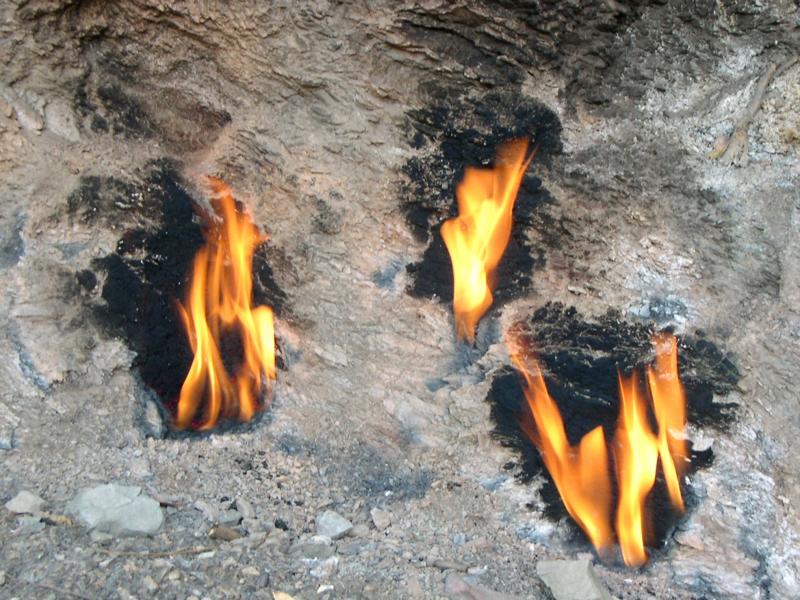
Photo: Steven Crook
A short distance further on, where the cliff-and-creek scenery is especially delightful, I came across what could be evidence of hunting with an illegal weapon: an Italian-manufactured shotgun shell.
BAMBOO CHARCOAL
Pinglin itself is just a few houses and some well-tended fields. I parked near a charcoal-making operation where bamboo had been cut, split and stacked with such precision that I half-expected the person in charge to exhibit symptoms of OCD. The fifty-something boss, however, looked me straight in the eye and showed typical countryside warmth. He told me he’d grown up in Pinglin, and started the bamboo charcoal business about two decades ago. He and his wife also make and sell bamboo vinegar.
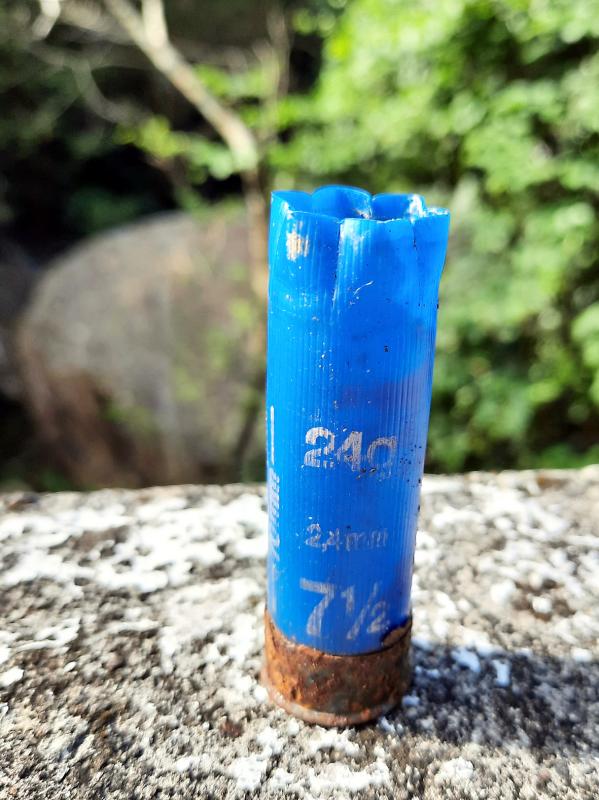
Photo: Steven Crook
Leaving the village, I passed the photogenic ruin of a traditional house. Later, it occurred to me that, unlike some other rural districts in Taiwan, in the vicinity of Pinglin there’s little evidence of depopulation. It’s not that the residents haven’t decamped to towns and cities. It’s more that hardly anyone settled here in the first place.
Working my way southward, I reached the Chiayi-Tainan border, where Chiayi Local Road 147 becomes Tainan Local Road 179 (南179). The first part of this route is relatively flat but never straight. Around Muguakeng (木瓜坑, “Papaya Hole”), more land is devoted to growing mangoes than to papaya cultivation.
Just north of the km21.5 marker on Local Road 179, I saw the road sign I’d been watching out for: An arrow pointing left to Tainan Local Road 179-1 (南179-1) and a place called Chuhuosi (出火仔).
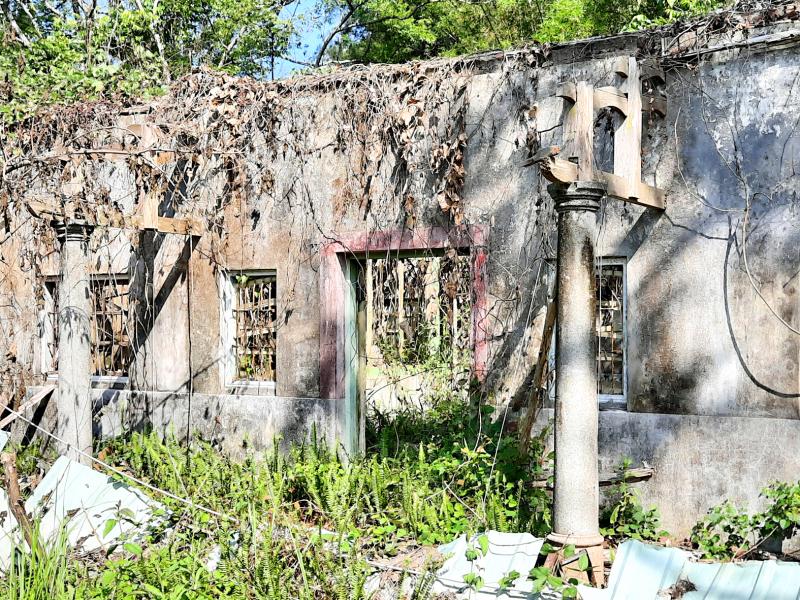
Photo: Steven Crook
No distance was given, but I knew from experience it wasn’t far to Chuhuosi. This toponym means “places where fire emerges.” It’s one of at least four places in Taiwan’s south where natural gas seeps from the ground and burns day and night, 365 days a year.
As I rode uphill, I paused a couple of times to look across the valley. On hillsides too steep to retain soil and foliage, exposed rock strata tilt at an angle of more than 20 degrees. Given the tectonic forces to which Taiwan is subjected, it’s not surprising to see rock layers that were originally horizontal pushed way out of kilter.
Local Road 179-1 gets steeper, narrower and rougher as it climbs toward Chuhuosi. At the km9 marker, certain it couldn’t be much further, and keen to get some exercise, I parked my scooter and began walking.
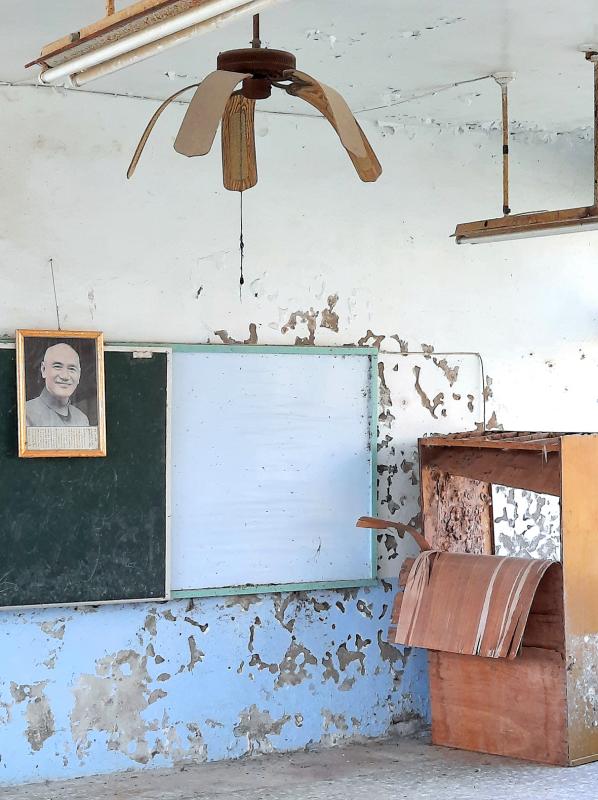
Photo: Steven Crook
BEWARE OF DOGS
I hadn’t got more than 100m when three aggressive dogs ran out of what could be a shrine, or maybe someone’s house. Hanging around to find out wasn’t a priority, even after the occupier emerged and ordered his canines to stand down.
The distance markers ended at km10.5, so I can’t say exactly how far it is from the Local Road 179-1 turnoff to the fire pit, but it took me around 40 minutes to walk from where I’d left my two-wheeler.
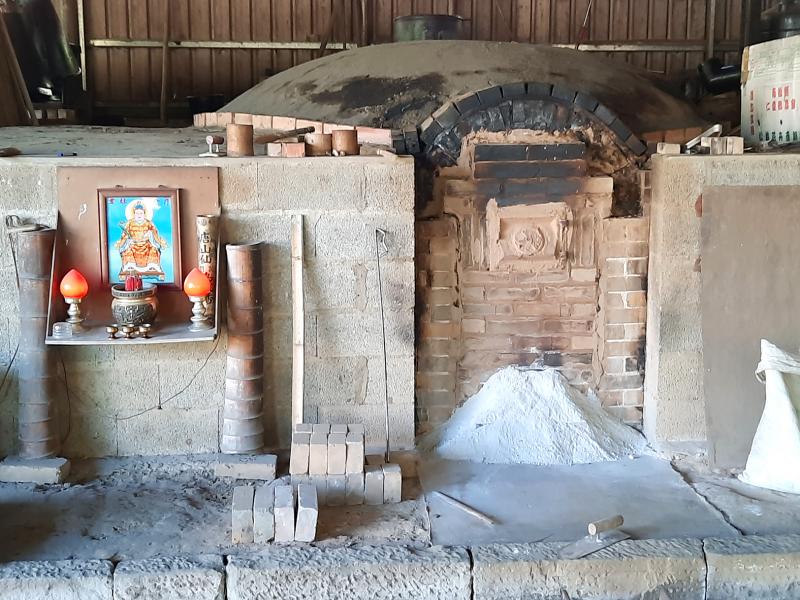
Photo: Steven Crook
I’m glad the hike wasn’t much longer, because the fire — to be frank — was something of a disappointment.
Photos from my 2007 visit show bento-sized clusters of flame. Online, I found a 2014 video in which this natural phenomenon burns like a campfire. A more recent video suggests it’d died down a bit by 2019, but at least flames were still clearly visible in daylight.
This time, I couldn’t see any fire whatsoever, even when I tossed dried leaves onto the blackened grit from which heat emanated. Nonstop crackling and sputtering were further evidence that combustion was occurring somewhere below the surface. Perhaps this spot should be renamed “place of hidden fire.”
The pit, which was semi-filled with muddy water, looks as if it’d been buried by rockslides and dug out. That, or tectonic activity, may account for its changing appearance over the years. Perhaps the reservoir of gas is nearly exhausted.
All was not lost, as it never is when I get out into semi-wilderness. The puddle attracted two dragonflies — a blue beauty of conventional dimensions, and a green-black monster twice its size.
Before I got back to my scooter, I glimpsed a Reeves’s muntjac grazing in the forest, less than five meters away. It took off with as much haste as its foot-long legs could muster, but this brief sighting was another good reason to smile on the long ride home.
Steven Crook has been writing about travel, culture and business in Taiwan since 1996. He is the author of Taiwan: The Bradt Travel Guide and co-author of A Culinary History of Taipei: Beyond Pork and Ponlai.

On April 26, The Lancet published a letter from two doctors at Taichung-based China Medical University Hospital (CMUH) warning that “Taiwan’s Health Care System is on the Brink of Collapse.” The authors said that “Years of policy inaction and mismanagement of resources have led to the National Health Insurance system operating under unsustainable conditions.” The pushback was immediate. Errors in the paper were quickly identified and publicized, to discredit the authors (the hospital apologized). CNA reported that CMUH said the letter described Taiwan in 2021 as having 62 nurses per 10,000 people, when the correct number was 78 nurses per 10,000

May 5 to May 11 What started out as friction between Taiwanese students at Taichung First High School and a Japanese head cook escalated dramatically over the first two weeks of May 1927. It began on April 30 when the cook’s wife knew that lotus starch used in that night’s dinner had rat feces in it, but failed to inform staff until the meal was already prepared. The students believed that her silence was intentional, and filed a complaint. The school’s Japanese administrators sided with the cook’s family, dismissing the students as troublemakers and clamping down on their freedoms — with

As Donald Trump’s executive order in March led to the shuttering of Voice of America (VOA) — the global broadcaster whose roots date back to the fight against Nazi propaganda — he quickly attracted support from figures not used to aligning themselves with any US administration. Trump had ordered the US Agency for Global Media, the federal agency that funds VOA and other groups promoting independent journalism overseas, to be “eliminated to the maximum extent consistent with applicable law.” The decision suddenly halted programming in 49 languages to more than 425 million people. In Moscow, Margarita Simonyan, the hardline editor-in-chief of the

Six weeks before I embarked on a research mission in Kyoto, I was sitting alone at a bar counter in Melbourne. Next to me, a woman was bragging loudly to a friend: She, too, was heading to Kyoto, I quickly discerned. Except her trip was in four months. And she’d just pulled an all-nighter booking restaurant reservations. As I snooped on the conversation, I broke out in a sweat, panicking because I’d yet to secure a single table. Then I remembered: Eating well in Japan is absolutely not something to lose sleep over. It’s true that the best-known institutions book up faster